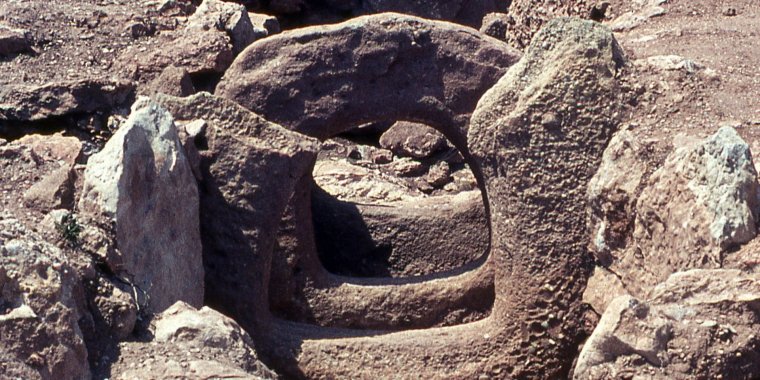| News / Science News |
The necropolis of El Barranquete in Níjar (Almería), proven to have been used for funerary rituals throughout the Bronze Age
Researchers from the University of Granada have discovered that the megalithic necropolis of El Barranquete in Níjar (Almería, south‑eastern Spain) prolonged its funerary use throughout the Bronze Age, a thousand years longer than previously thought, and that despite its proximity to the sea, people living there did not make use of marine resources.

Images of the megalithic necropolis El Barranquete in Níjar (Almería), where this study was carried out. Image credit: Gonzalo Aranda Jiménez/Department of Prehistory and Archaeology, University of Granada.
El Barranquete is an Almerian megalithic necropolis, a classic in the study of the societies of Los Millares culture. This necropolis is made up of at least 17 tholos‑type tombs –places used for collective burials– that were excavated between 1968 and 1971.
One of the researchers, Gonzalo Aranda, explains that this re‑inspection has been focused on characterizing the population buried at that site from their anthropological and biochemical study, as well as from the analysis of the chronology and temporality of this cultural phenomenon through the radiocarbon dating of their funerary activities.
The anthropological study of the remains, which are mixed together forming ossuaries, has shown that individuals of both genders and of all ages accessed to the funerary ritual, with little presence of children despite the high mortality rates.
In addition, the anthropological study has shown that these populations suffered from degenerative diseases such as osteoarthritis.
The analysis of the diet through the isotopes contained in the bone remains has shown that, despite the proximity of the Mediterranean, the diet of these populations was based almost exclusively on animal proteins (meat and derivatives) and on vegetables (especially wheat and barley), but not fish.
The second line of research has used radiocarbon dating to analyze the age at which 44 individuals died. This has allowed to discover that the necropolis was used for funerary rituals thoughout the Copper and Bronze ages, about 2,000 years, a thousand more than what was previously thought.
The study has emphasized that the use of large megalithic funerary structures shows, for the first time, the desire of human societies of transcending their present by creating a sacred landscape based on collective memory and the cult of ancestors.
Moreover, the UGR team of researchers points out that, although in the Bronze Age a new type of funerary ritual with individual tombs was established, this did not mean the social rupture that we thought until now, since the re‑use of ancient funerary monuments continued for several hundred years.
These studies allow us to affirm that the construction of megalithic landscapes is probably one of the most long‑lasting and powerful legacies of past societies and that, for millennia, these monuments were the scene for social interaction and the encounter with supernatural powers. (University of Granada)
YOU MAY ALSO LIKE





